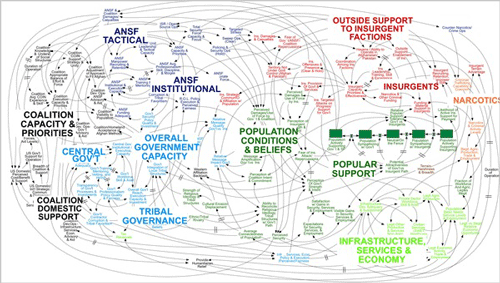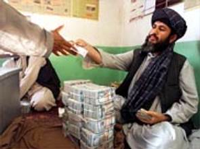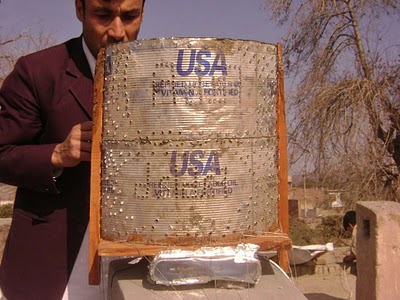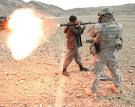A recent Christian Science Monitor article reported that USAID is “losing hearts and minds” in Afghanistan’s northeastern Badakshan province because of failed and shoddy projects, corruption, secrecy and waste.
Given how much of the US aid budget is spent trying to make the world a safer and more secure place for Americans, you might think there would be plenty of studies testing the hypothesis that aid funds can reduce terrorism or shift hostile public opinion. In fact, there is startlingly little evidence that we know how to use aid for this purpose.
Andrew Wilder, who led a two-year study at Tufts on the relationship between aid and security in Afghanistan, Pakistan and the Horn of Africa, has studied perceptions of the US following the 2005 earthquake in Pakistan, for which the US quickly pledged $50 million and played an early and visible part in relief efforts. A widely-cited poll taken a month after the quake showed that the percentage of Pakistanis with a favorable opinion of the US had doubled, from 23 percent to 46 percent.
But it took only six months for those numbers to drop back down to near pre-quake levels. A year and a half after the earthquake, Wilder’s team found that while the US response was effective from a humanitarian perspective, there was “little evidence of any significant ‘hearts and minds’ or security benefits....”
A slightly sunnier outlook on the question comes from a quantitative study on Iraq by Eli Berman, Jake Shapiro, and James Felter, entitled “Can Hearts and Minds Be Bought?” The answer seems to be a tentative “sometimes:” The authors concluded that increased public service provision did reduce violent incidents, but could only speak to CERP funds, which are allocated to small-scale projects and made up a very small fraction of overall reconstruction funding.
But researchers working with Wilder on the Tufts study conducting interviews in eastern Kenya found that small-scale projects (carried out in this case by AFRICOM’s Joint Task Force) didn’t succeed in getting communities to change their minds about the US. The authors explained:
…We found that attitudes were influenced by factors that went beyond the scope of aid projects- faith, the relationship between target populations and the Kenyan state, US foreign policy, and events in Somalia- were all much more important.
And in a context where US foreign policy in Afghanistan and the Middle East is perceived as an attack on Islam, a strategy that aims to win both "hearts" and "minds" appeared to people locally as an attempt to directly influence a Muslim community's faith and beliefs.
Wilder also tipped us off to a German longitudinal study underway in northeast Afghanistan. They found that aid positively influenced perceptions of the peacekeeping mission, but only when people felt that their own security was not at risk. Aid also had a positive impact on perceptions of local government, but these perceptions were “short-term and non-cumulative.”
So, are there cases in which aid COULD be used to promote security objectives? Maybe. The studies cited here lead to a couple of possible hypotheses, both of which would need much more research:
- Aid could help consolidate stability in areas that are already relatively stable, but is not much use in stabilizing a war zone
- Aid could help shift public opinion in a country that is already favorably disposed towards the US, but is less useful where attitudes are hostile to begin with.
It is hard enough to demonstrate that development assistance effectively promotes development. Especially in conflict zones like Afghanistan, the smart aid programs that can show lasting impact are sadly few and far between. The additional, unproven assumption that aid can tamp down terrorism and change the way people think about Americans in the midst of a conflict fought by Americans is almost certainly too much for it to bear.
 From Aid to Equality
From Aid to Equality











 News sources say that President Obama will choose “escalate” with additional troops for Afghanistan in his speech at West Point tonight. I and many like-minded individuals find this disastrous.
“Like-minded” means that critics of top-down state plans for economic development are also not fans of top-down state plans for military development. If the Left likes the first, and the Right likes the second, that just shows you how incoherent Left and Right are.
News sources say that President Obama will choose “escalate” with additional troops for Afghanistan in his speech at West Point tonight. I and many like-minded individuals find this disastrous.
“Like-minded” means that critics of top-down state plans for economic development are also not fans of top-down state plans for military development. If the Left likes the first, and the Right likes the second, that just shows you how incoherent Left and Right are.